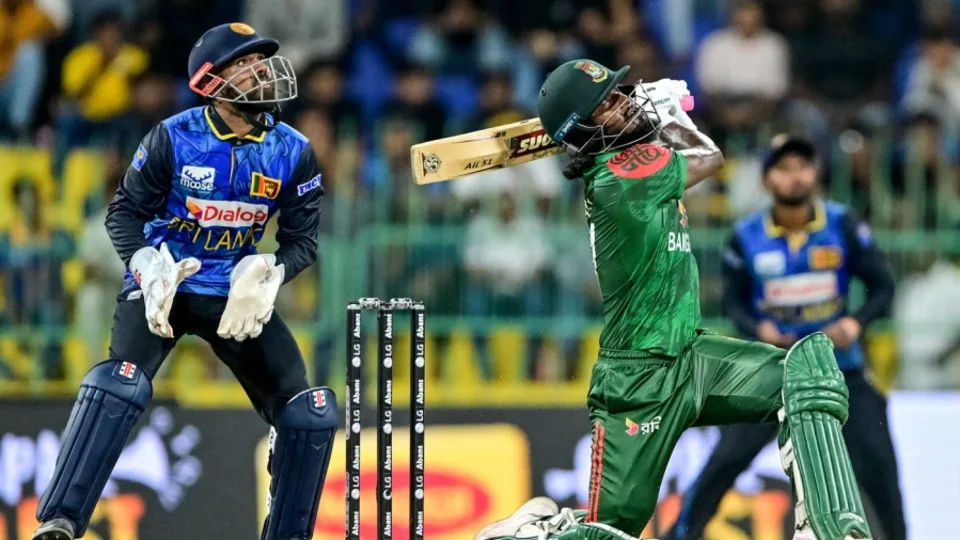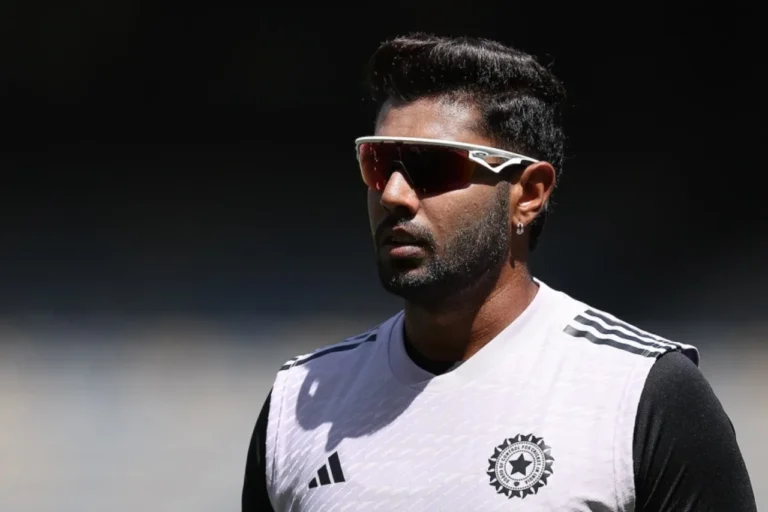For years, Bangladesh cricket carried the tag of being conservative, risk-averse, and content with nudging singles rather than clearing the ropes. That narrative has flipped dramatically over the last two years. A team once known for its lack of power-hitting is now averaging a century of sixes per year in T20 internationals, marking a historic shift in mentality and execution.
As the Asia Cup 2025 begins, Bangladesh enter the tournament with their most aggressive batting unit in history, built on the foundation of Tanzid Hasan, Parvez Hossain, Jaker Ali, and Shamim Hossain.

The Numbers Behind Bangladesh’s Six-Hitting Boom
Bangladesh’s transformation is best reflected in cold, hard numbers.
| Period | Sixes per Innings | Balls per Six | Total Sixes (2 years) |
|---|---|---|---|
| 2006–2023 | 3.81 | 29.58 | 130 (2022–23) |
| 2024 | 5.08 | ~20 | 238 (2024–25) |
| 2025 | 7.73 | 5.58 | – |
From 3.81 sixes per innings between 2006–23 (the lowest among ICC Full Members) to 7.73 sixes per innings in 2025, the difference is staggering.
Their balls-per-six ratio dropped from nearly 30 to just 5.58 in two years—proof of a team reprogramming itself to value power hitting.
The Young Guns Leading the Charge
This revolution has been driven not by veterans but by a new wave of fearless batters:
- Tanzid Hasan (24) – Aggressive opener setting the tone in the Powerplay.
- Parvez Hossain (23) – Adds flair at the top with multiple release shots.
- Jaker Ali (27) – Reliable finisher with the ability to clear boundaries under pressure.
- Shamim Hossain (24) – Versatile hitter who can now play 360 degrees.
Together, they average a six every 15.38 balls, compared to the 32.89 balls per six posted by Bangladesh’s golden quartet of Shakib Al Hasan, Tamim Iqbal, Mushfiqur Rahim, and Mahmudullah over their long T20I careers.
This is not just an improvement—it’s a paradigm shift.
Why the Change Happened Now
1. Freedom to Play Their Game
Assistant coach Mohammad Salahuddin credits the young players’ mindset. “They know their roles, they train purposefully, and they believe in their power-hitting ability.”
2. Role Models and Influences
Shahriar Nafees, Bangladesh’s first T20I captain, points out the generational shift:
- Earlier generations were told to “keep the ball on the ground.”
- Today’s players grew up watching Chris Gayle and AB de Villiers, normalizing six-hitting as a skill, not a risk.
3. Better Domestic Pitches
The BPL and domestic one-day tournaments now offer truer batting surfaces, giving batters confidence to expand their range.
4. Technical Growth
Jaker Ali worked with Salahuddin on base stability.
Tanzid Hasan refined his range-hitting under Shahriar Nafees.
Shamim Hossain expanded his shot selection beyond behind-the-wicket play.
Shot-Making Evolution
Bangladesh’s big-hitting growth is not about raw strength but shot efficiency.
- Pull shot: Six every 18 attempts (2021–23) → every 4.59 attempts (2024–25).
- Down-the-ground lofts: Higher conversion rates with better strike rate.
- Slog sweeps: Consistent boundary option in middle and death overs.
This has translated into higher scoring rates:
| Phase | 2021–23 Run Rate | 2024–25 Run Rate |
|---|---|---|
| Powerplay (0–6) | 6.98 | 7.5 |
| Middle overs (7–15) | 6.98 | 7.5 |
| Death overs (16–20) | 8.30 | 9.73 |
The key takeaway: Bangladesh now attack earlier and finish stronger.
Risk vs Reward
In the past, Bangladesh’s strategy was to “save wickets” for the final overs—a method that rarely worked. They neither accelerated enough nor cleared the ropes.
Now, their increased risk-taking in the Powerplay has boosted strike rates and forced opponents onto the back foot. Instead of waiting for collapse, Bangladesh proactively impose pressure.
The Asia Cup Test
The real challenge begins at the Asia Cup 2025, where Bangladesh face Hong Kong, Sri Lanka, and Afghanistan in Group B.
- They’ve already beaten Sri Lanka in an away T20I series this year.
- Their first goal is to reach the Super Four stage, something they last managed in 2018.
- Against familiar bowling attacks, Bangladesh’s six-hitting surge will either prove their rise—or expose old flaws.
If their young batters maintain composure alongside their aggression, Bangladesh could be one of the dark horses of the tournament.
For the first time in their T20I history, Bangladesh’s batting is feared for six-hitting ability rather than criticized for its lack of power. Tanzid, Parvez, Jaker, and Shamim have rewritten the script for a team once seen as conservative.
The question now is simple: can this fearless approach deliver Asia Cup glory?
Because for Bangladesh, the six is no longer a luxury. It’s their new identity.








